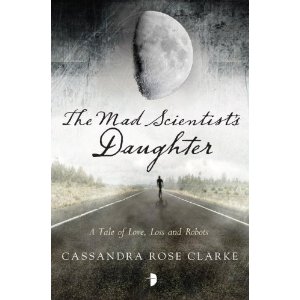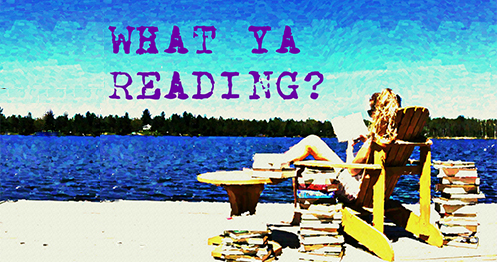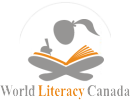
September 26th, 2012
Guest post by Cassandra Rose Clarke: Top 10 Bookish Settings
Hello, everyone! Ana asked me to write a guest blog on my favorite bookish settings. This request was a lot harder than it initially seemed! Fortunately, I was finally able to narrow it down to my top ten. Here they are, listed in no particular order:
1. The Weetzie Bat books, by Francesca Lia Block: I’m always going on about how much I love Francesca Lia Block’s writing, and these books were the first on my list. On the cover of the omnibus edition, The New York Times is quoted as saying that Block “writes about the real Los Angeles better than anybody since Raymond Chandler.” Having never been to Los Angeles, I don’t know if that’s true or not, but I will say that Block’s descriptions of the city have single-handedly made me want to move there. She’s created a place where punk rock, old Hollywood, street food, canyons, filmmakers, and fashionistas all twist together to form an urban magic as bright and ubiquitous as neon.
2. Howl’s Moving Castle, by Diana Wynne Jones: One of the delightful things Jones does in this book is use fairy tale tropes as the basis for the conventions of Sophie’s society. Sophie is the eldest of three, which means she’s destined to fail horribly when they set out to make their fortunes (as happens in fairy tales all the time, since it’s always the youngest who succeeds). Her sisters are really her stepsisters, which should make them mean-spirited and ugly, but of course they aren’t at all. I also love how Sophie refuses to follow convention, which means she stays at home rather than going out on an adventure. It’s a clever take on the fairy tale setting.
3. Snow Crash & Diamond Age, by Neal Stephenson: These are technically two separate books, but I can’t help reading them as one world set during different times. The world in question is an interesting extrapolation from the cyberpunk books of the 1980s: technology is still overwhelmingly everywhere, but it’s also glitzy and bright and not necessary bad in and of itself. Diamond Age also explores a semi-dystopic social structure that I found intriguing, in which humanity has splintered itself up into tribes rather than nation-states.
4. The Great Gatsby, by F. Scott Fitzgerald: To me, this book has always read like a fantasy. The wealthy social sphere into which Gatsby inserts himself is described as if it belongs to a dream — drinks float around at parties, Daisy drifts in on a cloud of a fabric the first time we see her. The setting itself reflects just how ephemeral Gatsby’s social position is, which I think is brilliant.
5. A Song of Ice and Fire, by George R. R. Martin: This is not a world I would want to live in, at all, but I find it incredibly compelling. One of the things I love about the worldbuilding in these books is that you can see which aspects of it Martin finds interesting and which ones he doesn’t. So there are place names like “the Riverlands,” but there are also paragraph-long descriptions of coats of arms. Plus the world is just so big, which makes it a wonderful fandomy place, since there are so many minor characters and minor places that can be explored in fan fiction and fan art.
6. The Harry Potter books, by J.K. Rowling: In a lot of ways, the Harry Potter world is the flipside of the Song and Ice Fire world. Both are enormous and compelling and serve fandom purposes extremely well, but the Harry Potter world isn’t an endless parade of darkness and misery. One of the things I love best about the setting in Harry Potter is how you can go through and fill in the gaps — what, exactly is Dark Magic? What are wizarding schools like outside of Great Britain? There’s so much to explore.
7. Swamplandia!, by Karen Russell: Swamplandia! is an adult book that takes place in the Florida Everglades and is told from the point of view of a precocious adolescent girl. Even though the book is a realistic novel, the swamp is described as this treacherous, magical place that made it feel separate from our world. At the same time, though, Russell captures the flora and fauna and all the sensory details of the swamp in a way that feels very authentic.
8. The Martian Chronicles, by Ray Bradbury: This book fulfills all my lovely retro-futuristic dreams. It’s science fiction that reads like fantasy or even, at times, like surrealism. One of the characters has a bee gun! That’s a gun that shoots out bees! I also love the rainstorm that turns a desert into a forest. Bradbury’s Mars is less an exploration of scientific possibility and more an amalgamation of the stories we have about Mars, space travel, and colonization.
9. Mockingbird & Perfect Circle, by Sean Stewart: Again, these are two stand-alone novels that share a closely-related setting. In this case, it’s a magical realist version of Houston, Texas (where I live). Stewart does a wonderful job of capturing Houston in all its sprawling, sweltering glory, and he weaves in magic that feels organic to the city. I only have one quibble: in Mockingbird, the characters live in a house with no air-conditioning! I’ve never seen an air-condition-less house in Houston in my entire life.
10. Harriet the Spy, by Louis Fitzgerald: I know Harriet the Spy isn’t a typical “setting” book, but the setting was one of the things that captured my attention when I first read the story as a kid. When it was written, the book took place in the present day — that is, 1960s New York. But to me, reading it in Texas in the ‘90s, it might as well have been Middle Earth. I loved the descriptions of townhouses and apartments and neighborhood grocery stores, all perfectly mundane things I’d never seen myself.

![[Twitter]](http://www.whatyareading.com/wp-content/plugins/bookmarkify/twitter.png)
